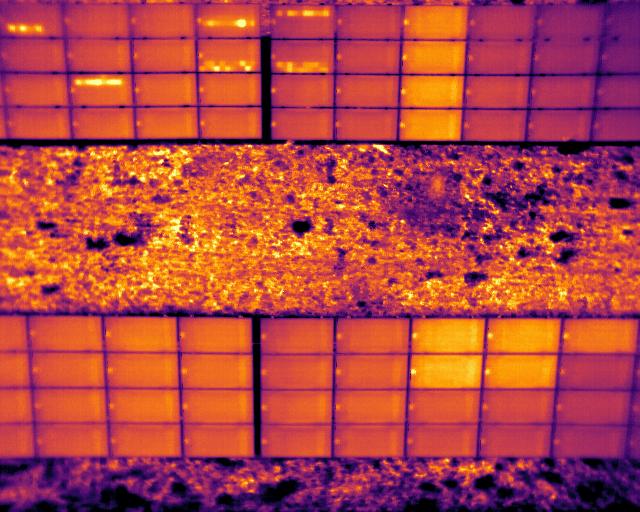A group of Russian researchers has developed a new active technique to reduce the operating temperatures of solar modules that acts simultaneously on both sides of a panel.
The system, dubbed “dual surface cooling,” is built with a 16 mm single polyvinyl chloride (PVC) perforated pipe applied on the upper part of the module that spreads water on the front and the rear surfaces. A cotton wick mesh is applied on the rear surface to collect the water and spread it on the rear surface.
“One issue that this study minimizes is the loss of water through evaporation through the covering of the back surface of the panel with aluminum sheet which is also strategically perforated to allow the flow of air into the inner section of the enclosed area,” the academics explained. “This approach does not totally prevent the loss of water but minimizes its loss especially at the rear section of the panel.”
“Holes were created in the aluminum sheet in order to allow some level of air exchange in the inner section of the panel and the ambient air,” the Russian group said.
The technique was tested on two panels with a size of 95×45 cm, an output of 30 W, and a tilt angle of 45 degrees each. The thermal imager Testo 875 was used to take infra-red thermal images for both panels during mid-day and a GM 1362-EN-01 temperature thermometer and 14 K-type thermocouples were utilized to measure the panel temperature. The performance of the system was compared to that of a reference system with no cooling system applied.
The measurements showed that the cooled system achieved an average temperature of 35.72 degrees Celsius while the uncooled one reached 59.27 degrees Celsius. Furthermore, the cooled panel had an average power and voltage of 18.53 V and 13.03 W compared to 16.71 V and 10.00 W for the uncooled system.
“Similarly, the cooled PV module recorded an average efficiency of 14.36% against 12.83% for the uncooled panel. This represents a difference of 1.53% which is an 11.9% improvement in the efficiency of the cooled panel,” the researchers said.
“The system was tested in a real environment but we haven’t evaluated the economics of the cooling mechanism,” researcher Ephraim Bonah Agyekum told pv magazine. Looking forward, the research team wants to add sieves to the basin beneath the panel to filter out dirt and to consider the effect of flow rate on the performance of the module.
The system is described in the study “Effect of dual surface cooling of solar photovoltaic panel on the efficiency of the module: experimental investigation,” which was recently published in Heliyon.
This content is protected by copyright and may not be reused. If you want to cooperate with us and would like to reuse some of our content, please contact: editors@pv-magazine.com.









Looks like they left out an important piece of equipment – a radiator. As water is pumped through the system, the water in the tank is going to heat up until it no longer cools the panels. Maybe they were using a radiator and just didn’t mention it. Anyway, that’s another item to add to the cost and the radiator should be shaded as well which adds more material and labor. But maybe over the long term, it would pay for itself.